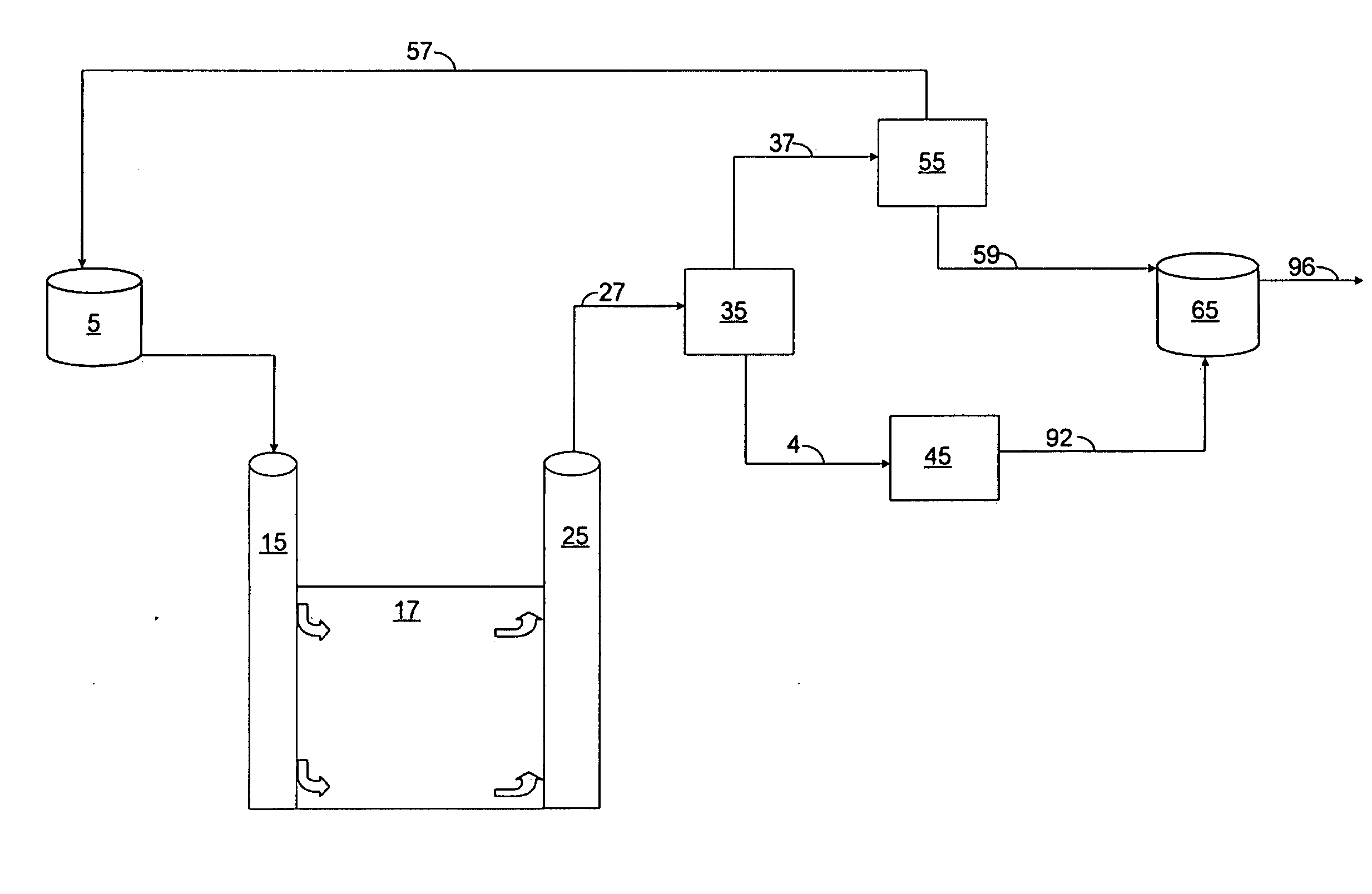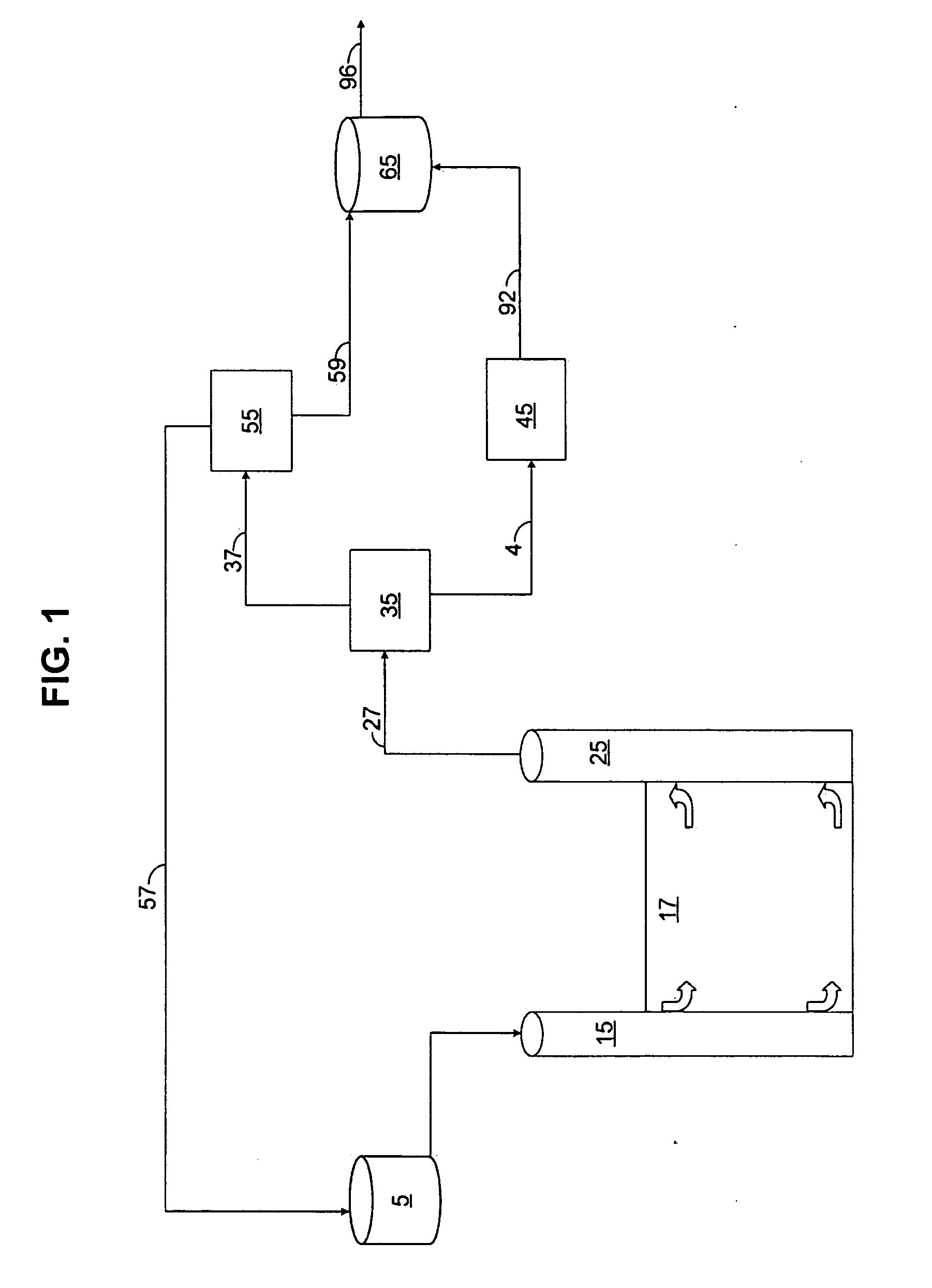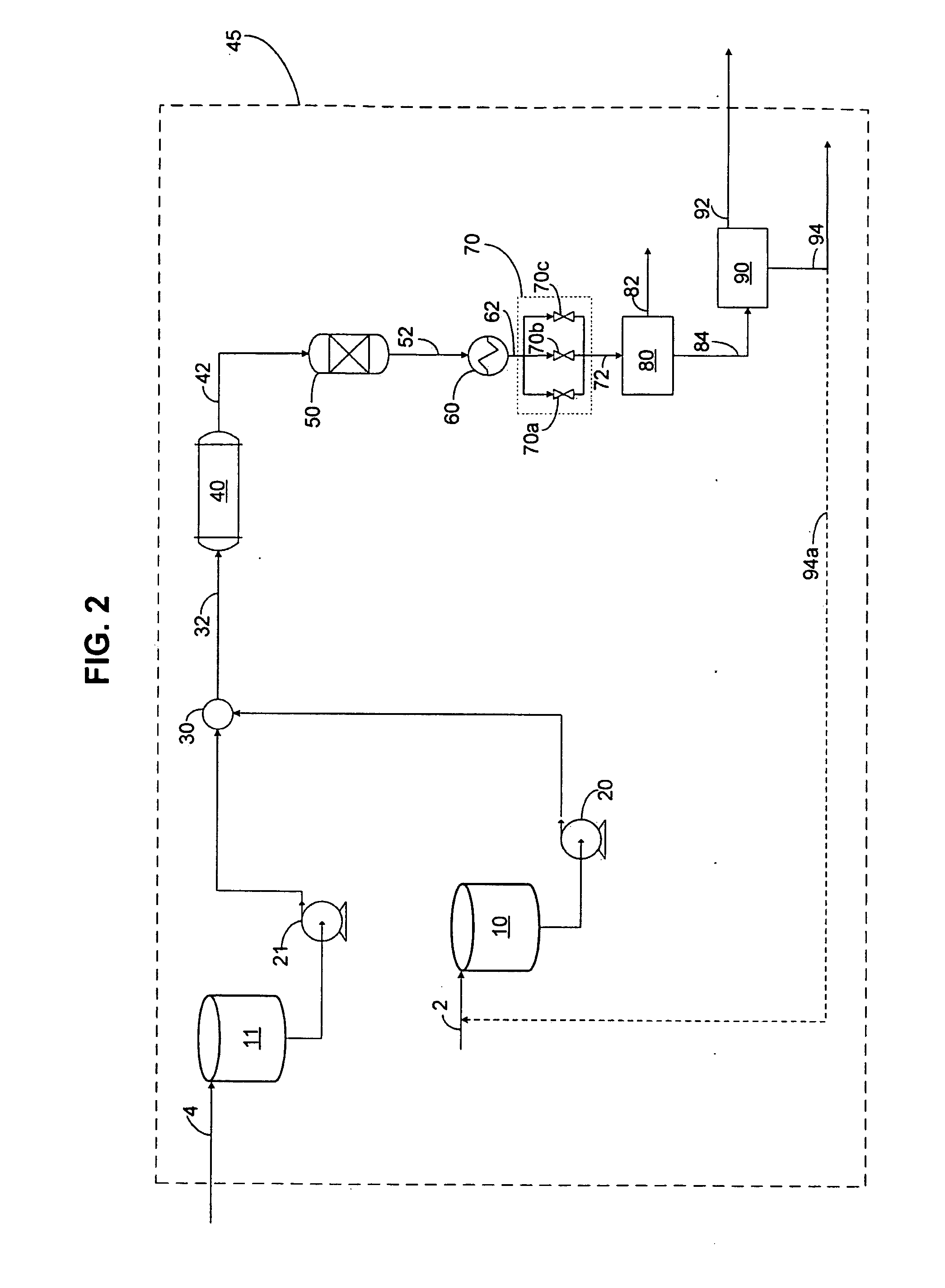Process to upgrade whole crude oil by hot pressurized water and recovery fluid
a technology of recovery fluid and crude oil, which is applied in the direction of water treatment, supercritical condition process, and borehole/well accessories, etc., can solve the problems of not adjusting for the expected increase in future demand, reducing and reducing the cost of hydroprocessing. , to achieve the effect of reducing the cost of hydroprocessing and increasing the value of feedstock
- Summary
- Abstract
- Description
- Claims
- Application Information
AI Technical Summary
Benefits of technology
Problems solved by technology
Method used
Image
Examples
Embodiment Construction
[0047]The present invention provides a process for converting whole crude oil into more valuable crude oil feedstock without an external supply of hydrogen or catalysts. The process generally includes injecting the recovery fluid under pressure into the injection well such that the recovery fluid sweeps an underground formation and thereby increases overall production from the production well. The process further includes depressurizing the recovered whole crude oil, which is intimately mixed with the recovery fluid, in a step-wise fashion such that the light fraction and heavy fraction that make up the whole crude oil are separated. The heavy fraction can then be sent to a hydrothermal upgrading facility for reformation.
[0048]The reformation step generally includes contacting the heavy fraction with hot pressurized water to produce a reformed heavy fraction having a higher API gravity and reduced amounts of asphaltene, sulfur, nitrogen or metal containing substances as compared to ...
PUM
 Login to View More
Login to View More Abstract
Description
Claims
Application Information
 Login to View More
Login to View More - R&D
- Intellectual Property
- Life Sciences
- Materials
- Tech Scout
- Unparalleled Data Quality
- Higher Quality Content
- 60% Fewer Hallucinations
Browse by: Latest US Patents, China's latest patents, Technical Efficacy Thesaurus, Application Domain, Technology Topic, Popular Technical Reports.
© 2025 PatSnap. All rights reserved.Legal|Privacy policy|Modern Slavery Act Transparency Statement|Sitemap|About US| Contact US: help@patsnap.com



